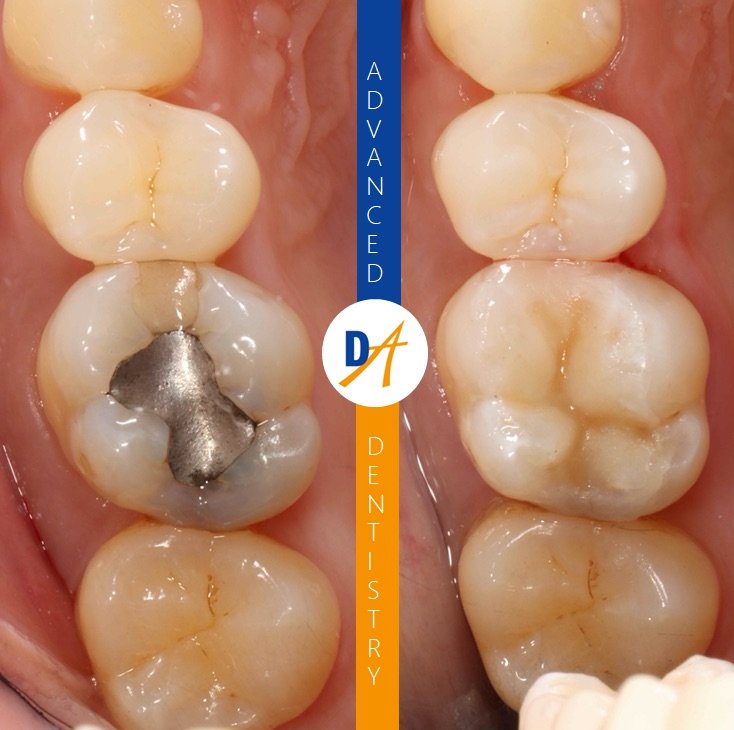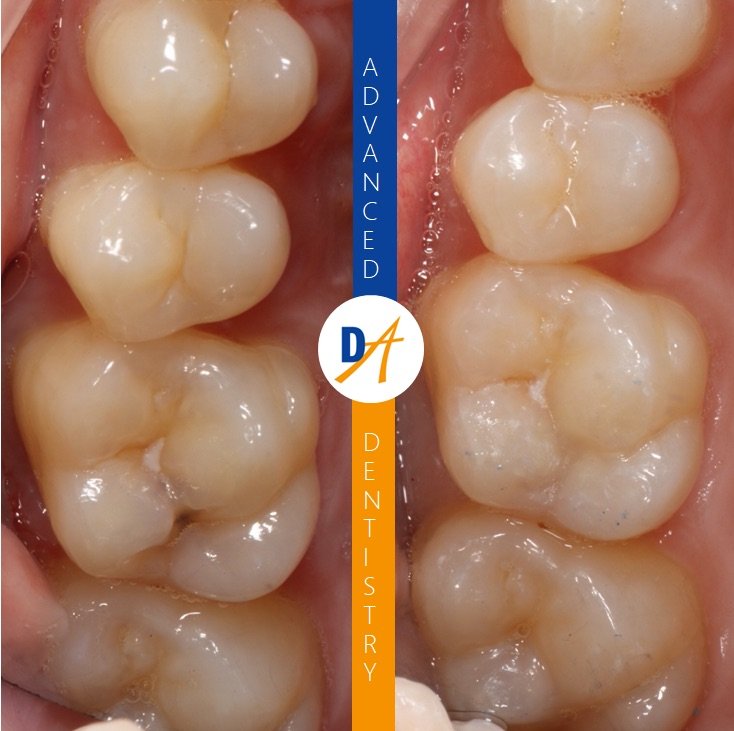
White Fillings.
FAQs
-
A White filling, also known as dental composite, is a tooth-coloured, aesthetic resin used to fill cavities or repair fractured teeth.
They are chemically bonded to the teeth and require less tooth removal than traditional metal silver fillings, so they are often better for the health of the tooth. They can help strengthen, protect and restore the tooth back to its natural shape and look to help prevent further decay or damage.
AMALGAM FREE ZONE
Amalgam fillings make your teeth look black, add no strength to the tooth, are a more destructive to your tooth and eventually lead to your tooth cracking around them.
At Dental Art we avoid mercury containing, silver, amalgam fillings and we recommend healthier, protective and more preventative options to restore your teeth, such as white fillings and onlays.
-
The main causes of tooth decay is a HIGH SUGAR diet and POOR BRUSHING technique.
Plaque contains bacteria and this builds up on your teeth throughout the day. As you eat and drink something sugary, the bacteria uses the sugar and turns it into acid.
Over time, and with repeated and frequent episodes of sugary exposure, the acid the bacteria produce can slowly erode tooth enamel.
As your tooth enamel weakens, the risk for decay increases. Cavities start small and gradually become bigger when they are left untreated.
Many cavities don’t cause pain in the beginning, so it can be hard to even know you have a problem, this is why it is important to see your dentist regularly for check ups.
Catching things early is essential to preserving the health of the tooth. It often means less intervention is needed, preserves your beautiful smile, and leads to a better success rate of your teeth lasting your lifetime.
-
Everyone is at risk for cavities, but some people have a higher risk. These include:
Consuming too many sugary or acidic foods and drinks
A poor oral hygiene routine, such as failing to brush or floss daily
Not getting enough fluoride
A dry mouth
Eating disorders and acid reflux disease
-
Pain or sensitivity
Bad breath or taste
Food getting stuck between your teeth
Discouloured tooth – usually black or white staining
Sharp or visibly broken tooth
Poor oral hygeine and high sugar intake
-
Brush for at least 2 minutes twice a day
Floss or use interdental brushes to clean between your teeth daily
Use a fluoride containing toothpaste
After you finish brushing spit out the toothpaste but don’t rinse out after
Limit your sugary food and drink intake to no more than 3-4 times per day and keep them to your mealtimes only
Throughout the day drink water and avoid sugary and acidic drinks
-
Yes in most cases this is an option for you, and is a common treatment we carry out here at Dental Art. Contact us to book in a consultation and check-up to discuss this further with one of our dentists.
-
When a larger filling is required, this can weaken a tooth and often an ONLAY is a better option (follow the link for more information).
Onlays are similar to dental Crowns, but are less invasive and preserve more of your natural tooth structure. They are intended to replicate the natural contours of teeth and act to protect and restore the tooth back to its original strength.
Most commonly we use natural tooth coloured porcelain Onlays, but there are other options which may be better suited to you. Your dentist will discuss which option would be best for you.
There are numerous advantages in using Onlays, including:
Minimal tooth reduction
Strength restored to your tooth
Flawless aesthetics. By their very nature they blend right in complementing the surrounding teeth.
Call our friendly reception team to book a consultation with one of our dentists
Let’s get started!
Book an appointment online right now !





